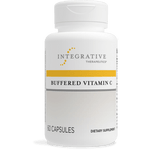Vitamin C is also called ascorbic acid. There have been over 7000 articles written about vitamin C. It is a strong water-soluble antioxidant. Vitamin C stimulates the immune system in seven different ways and is important in collagen formation. It is important in the synthesis of connective tissue, and in wound healing. It helps regulate lipids in blood, iron absorption and is important in synthesis of hormones in stress situations. It helps regenerate vitamin E in the body. It is found in many fruits and vegetables such as sweet peppers, broccoli, cauliflower, lemons, strawberries, asparagus, spinach, oranges, cantaloupe, grapefruit and tomatoes.
Deficiency of vitamin C results in the classical disease of scurvy. Other conditions are pain in joints, slow wound healing, lower disease resistance, easy bruising, bleeding gums, loose teeth, irritability, premature wrinkling and aging of skin. Like most other vitamins, humans cannot make vitamin C.
Specimen collection, preparation and transport is of vital importance for accurate results. Collect the specimen in a cold heparin or EDTA tube. Place tube in ice water and centrifuge immediately. Place 3.0 mL of plasma in 4.5 mL of cold 3% metaphosphoric acid (MPA, supplied with kit). Mix vigorously and freeze. Ship frozen in the MPA tube.
The RDA for vitamin C is 75 mgs for females, 90 mgs for males. A suggested supplemental dose is 100 to 2000 mg.
Doctors who wish to order kits, please call our lab directly to set up an account before ordering. 316-684-7784
- Padayatta SJ, He S, et al. Vitamin C pharmacokinetics: Implications for oral and intravenous use. Ann Intern Med. 2004;140:535-537.
- Riordan NH, Riordan HD, Jackson JA, et al. Intravenous ascorbate as a tumor cytotoxic chemotherapeutic agent. Med Hypothesis. 1995; 44:207-13.
- Riordan NH, Riordan HD, Casciari JP, Jackson JA. Clinical and experimental experiences with intravenous vitamin C. 2000; J Orthomol Med. 15:201-213.
- Cameron E, Pauling L. Cancer and vitamin C. Philadelphia: Camino Books;1993.
- Jackson JA, Riordan HD, Hunninghake RE, et al. High dose intravenous vitamin C and long-time survival of a patient with cancer of head of the pancreas. 1995; J Orthomol Med. 1995; 10:87.
- Washko PW, Hartzell WO, Levine M. Ascorbic acid analysis using HPLC with coulometric electrical chemical detection. Analytical Biochemistry. 1989; 181: 276-282.
- CPT CODE:
- 82180
- COLLECTION CONTAINER:
- EDTA or Heparin tube
- STATE & SHIPPING RESTRICTIONS:
- We cannot ship lab kits to NY, AK, HI, or international
- MINIMUM VOLUME:
- 2 mL plasma added to 3 mL (adjusted volume) cold MPA. If minimum volumes of plasma & MPA are used, it must be noted on the requisition as (2 mL plasma + 3 mL MPA used).
- NORMAL VALUES:
- The normal value established in our laboratory is 0.6 to 2.0 mg/dL.
- PATIENT PREP:
- None
- PROCESS METHOD:
- The methodology is by HPLC.
- PROCESS TIME:
- 5 to 7 business days
- REJECTION CAUSES:
- Gross Hemolysis; insufficient specimen; specimen not frozen; incorrect ratio of plasma to MPA
- SPECIAL INSTRUCTIONS:
- Separate plasma from cells and process specimen immediately after collection. Ratio of plasma to 3% metaphosphoric acid (MPA) must be maintained, so care must be taken to add exact amount of plasma to the provided 4.5 mL aliquot of MPA. Plasma-MPA s
- SPECIMEN VOLUME:
- 3 mL EDTA or Heparin plasma added to 4.5 mL cold MPA. Mix vigorously.
- SYNONYMS:
- Plasma Ascorbic Acid
- TRANSPORT CONTAINER:
- Plastic transport tube
- TRANSPORT INSTRUCTIONS:
- Freeze










